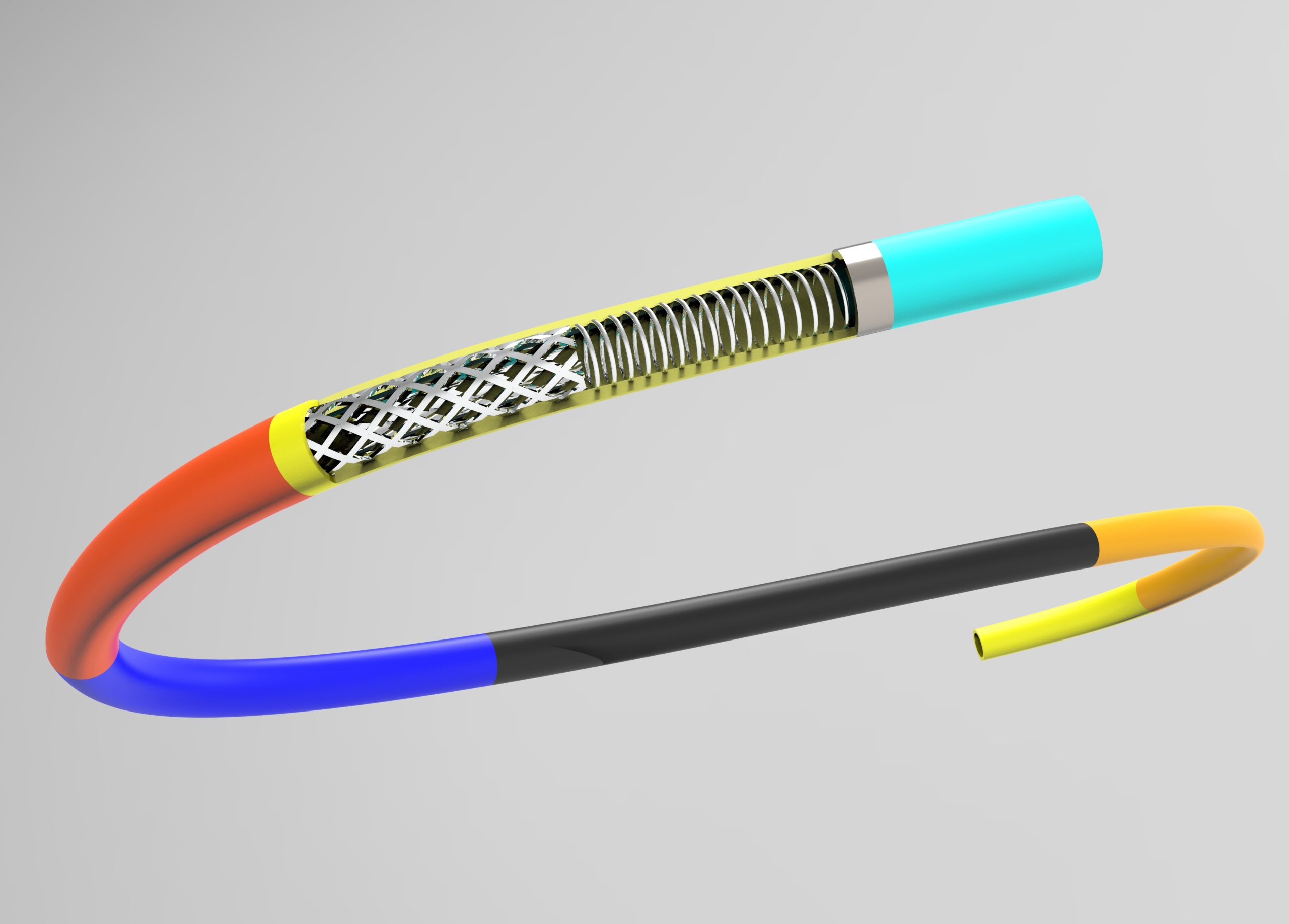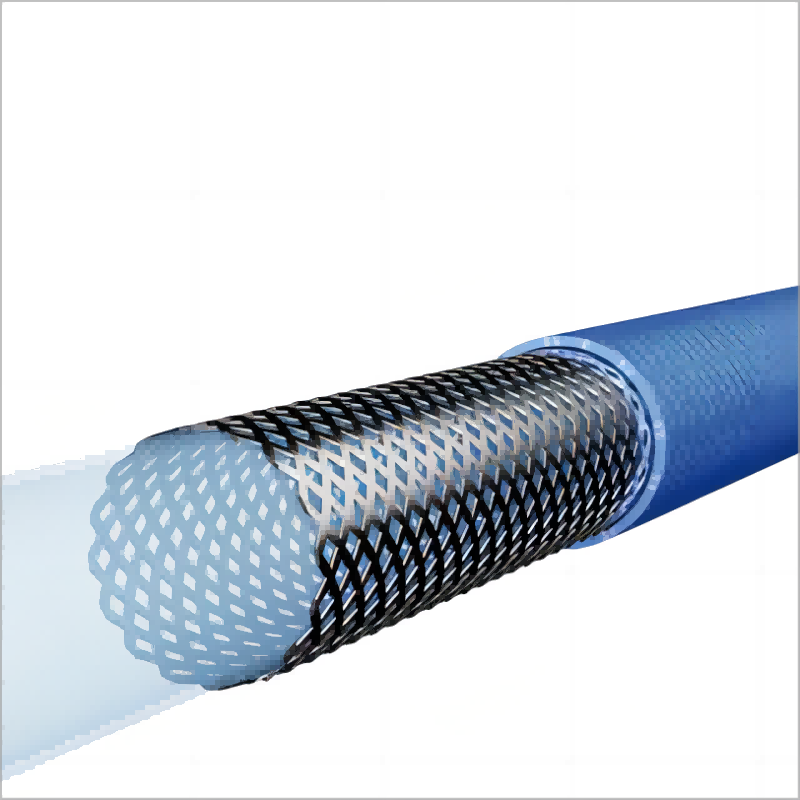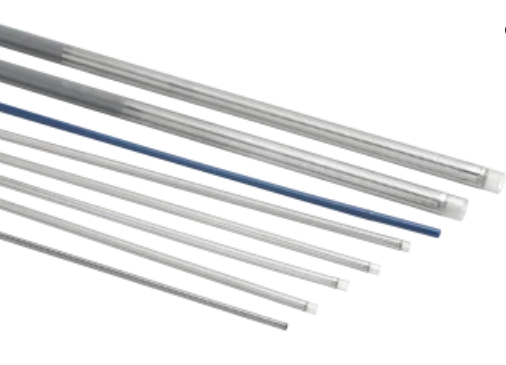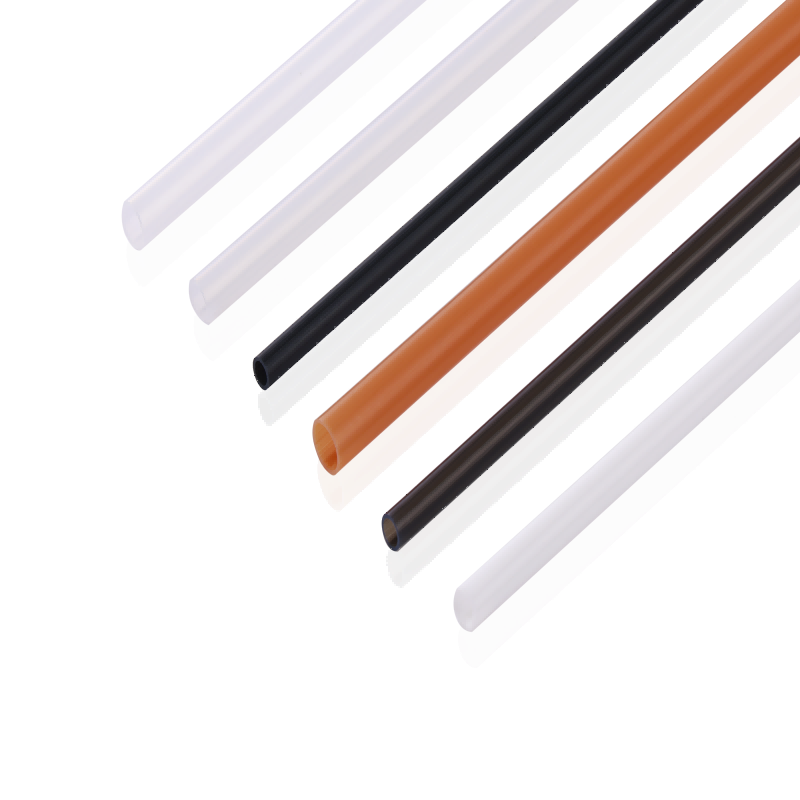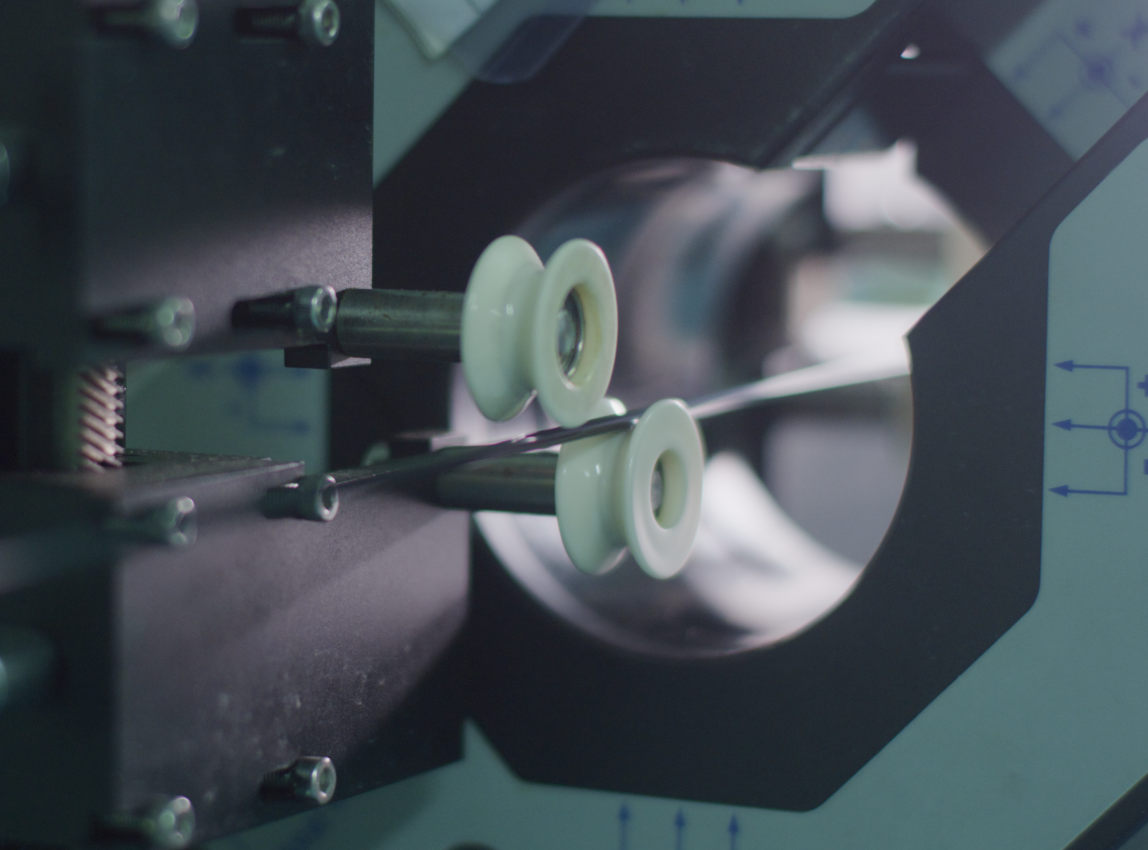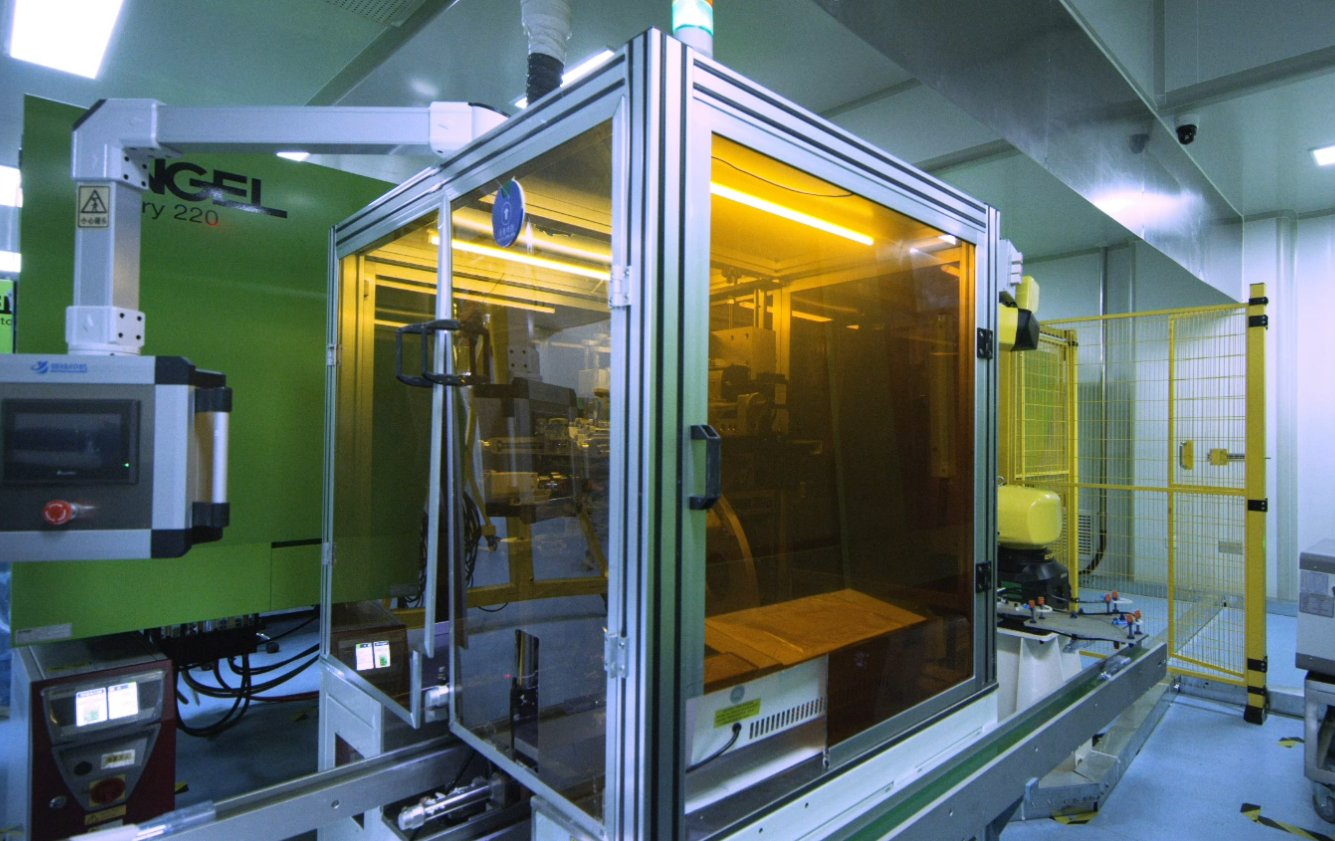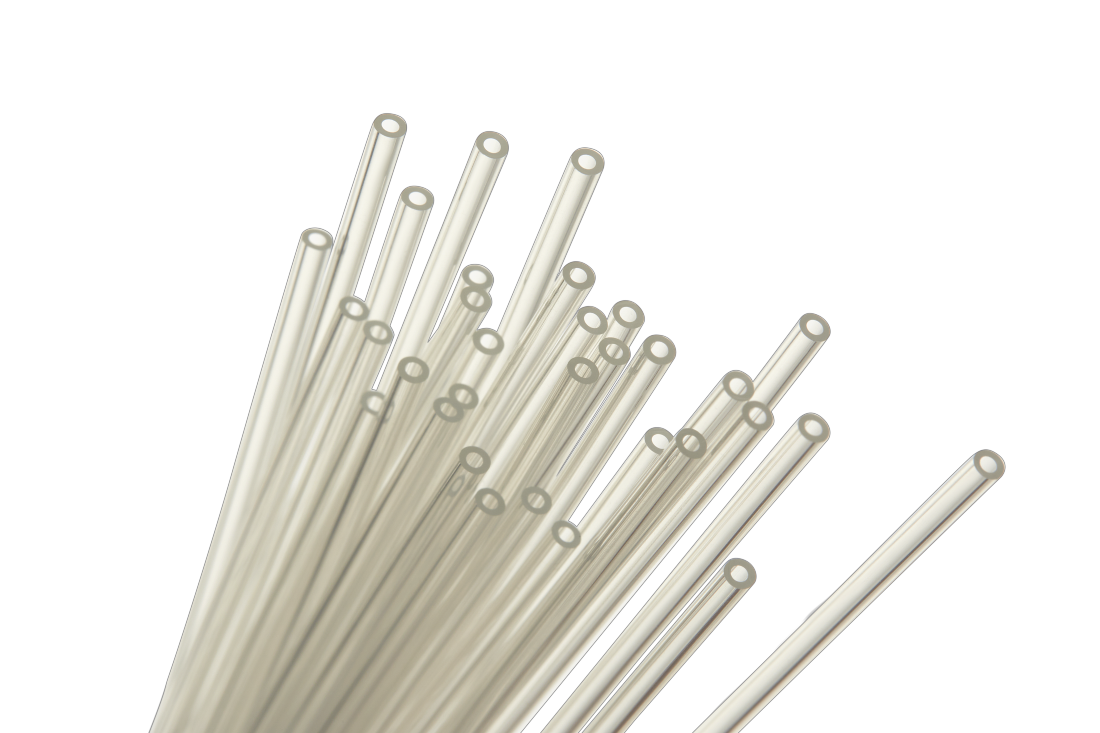Braid & Coil Reinforcement Tube
The Demax Braid & Coil Reinforcement Tube is an innovative medical device designed to provide enhanced strength and flexibility for a wide range of medical applications. Crafted with precision and utilizing advanced materials, this reinforced tubing offers exceptional performance and reliability, making it an indispensable tool for medical professionals in various clinical settings.
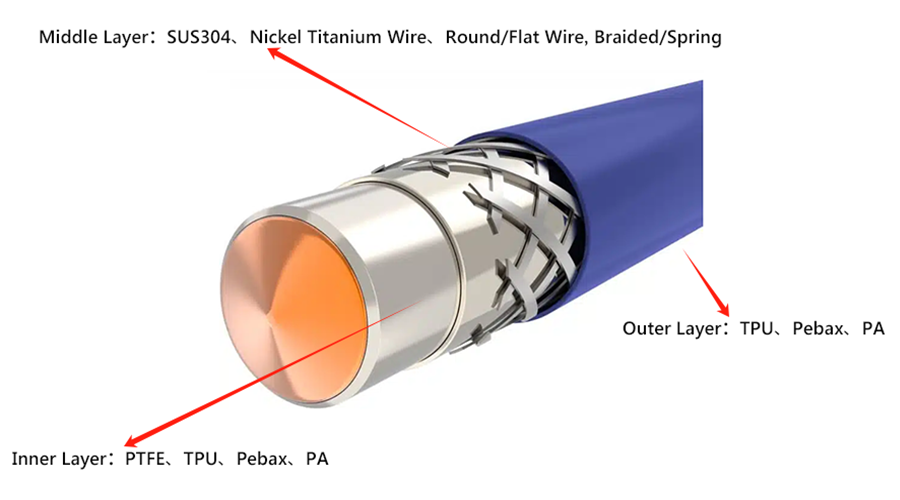
| Inner Diameter(mm) | Inner Diameter Tolerance(mm) | Tube Wall Thickness(mm) | Outer Diameter Tolerance(mm) |
| 0.5-15 | ±0.0125 | 0.07-3 | ±0.01 |
Features
- Outer layer: TPU, Pebax, PA
- Middle layer: SUS304, nickel-titanium wire, stainless steel wire (round wire/flat wire), braided/spring
- Inner layer: PTFE, TPU, PEBAX, PA
- High torque, strong operability,
- Excellent pushing force, anti-explosion and anti-bending capabilities
- Medical-Grade Materials: Ensures biocompatibility and safety for patient use, minimizing the risk of adverse reactions or complications.
Applications
- Angiography Catheter
- Guiding Catheter
- Microcatheter
- Guide sheath
- Distal access catheter
Technical Parameters
- Inner diameter (mm): 5~15
- Inner diameter tolerance (mm): ±0125
- Wall thickness (mm): 07~3
- Outer diameter tolerance (mm):±1
Other Information
- Weaving density (PPI), coil spacing, tube diameter, etc. can all be customized
- Weaving spindle number: 8, 16, 32, 48, 72
- Weaving method: 1×1, 1×2, 2×2
- Vascular Interventions: Used for the delivery of contrast media, saline solution, or therapeutic agents during vascular procedures such as angiography, angioplasty, and stent placement.
Endoscopy: Utilized for the delivery of irrigation fluid, suction, or therapeutic agents during endoscopic procedures such as gastroscopy, colonoscopy, and bronchoscopy.
- Urology Procedures: Used for the delivery of contrast media, saline solution, or therapeutic agents during urological procedures such as cystoscopy, ureteroscopy, and nephrostomy.
- Surgical Procedures: Employed for the delivery of irrigation fluid, suction, or therapeutic agents during surgical procedures such as laparoscopy, arthroscopy, and neurosurgery.
- Diagnostic Imaging: Used for the delivery of contrast media during diagnostic imaging procedures such as computed tomography (CT), magnetic resonance imaging (MRI), and ultrasound.
Related products
PTFE Liner
PTFE (polytetrafluoroethylene) is a synthetic fluoropolymer that is used as a liner in catheters due to its unique properties. PTFE has a very low coefficient of friction and is a highly durable material with excellent tensile strength. Catheter liners made of PTFE can withstand the stresses of use in medical devices and resist breaking or tearing.
PTFE is used as a liner in catheters because it provides a smooth, low-friction surface that helps reduce the risk of infection and tissue damage. They are also biocompatible so that most people won’t experience an allergic reaction or any negative response.
Punching
Precision Medical Tubing Services Punching from Demax involves the precise creation of perforations, holes, or patterns in medical-grade tubing using advanced punching methods and equipment. The tubing material, typically made from medical-grade polymers such as polyethylene (PE), polyurethane (PU), or silicone, is carefully selected for its biocompatibility, flexibility, and durability. During the punching process, specialized punches and dies are used to create holes of specific sizes, shapes, and configurations in the tubing, allowing for precise control over the perforation characteristics. Each punched hole is inspected and verified to ensure that it meets the required tolerances and quality standards. Demax’s expertise in precision punching ensures that punched medical tubing maintains its structural integrity, biocompatibility, and performance, meeting the demanding requirements of medical device manufacturers and healthcare professionals.
Flaring
Precision Medical Tubing Services Flaring involves the precise modification of medical-grade tubing materials to create flares and expansions. The composition of the tubing used in this process varies depending on the specific requirements of the medical device and the application. Typically, medical tubing is made from biocompatible polymers such as polyethylene (PE), polyurethane (PU), polyvinyl chloride (PVC), silicone, or thermoplastic elastomers (TPE). These materials are selected for their flexibility, durability, and compatibility with bodily fluids and tissues.
PA Tube
The PA Tube, also referred to as a Single Lumen Tube, is a crucial component utilized in various medical settings for precise fluid delivery or instrument insertion during procedures. It serves as a conduit, ensuring the seamless transfer of fluids or the introduction of medical instruments with accuracy and reliability. Constructed from durable materials, the PA Tube is designed to withstand the rigors of medical procedures while prioritizing patient safety and comfort.
